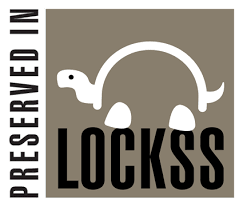The Role of Automation in Enhancing Efficiency and Accuracy in SEAIT’s School Clinic
DOI:
https://doi.org/10.54756/IJSAR.2025.7.1Keywords:
Automation, Human–Computer Interaction (HCI), Workflow Efficiency, Record Accuracy, Technology Acceptance Model (TAM), School Clinic Management System, Healthcare DigitalizationAbstract
This study examined the role of automation in improving workflow efficiency and record accuracy in the SEAIT School Clinic through the implementation of the SEAIT School Clinic Management System (SSCMS). Employing a mixed-method design, the research integrated quantitative and qualitative data collection through structured surveys, focus group discussions, and system evaluation. The quantitative analysis, including descriptive statistics, paired sample t-tests, and Pearson correlation, revealed a significant increase in workflow efficiency and record accuracy following automation (p < 0.05). The qualitative findings supported these results, highlighting improvements in documentation, report generation, and access to patient records. Participants emphasized that automation reduced manual workload, minimized human error, and enhanced overall service quality, although challenges such as limited training, data privacy, and infrastructure constraints were also noted. The study, grounded in the Technology Acceptance Model (TAM), demonstrated that perceived usefulness and ease of use significantly influenced system adoption and satisfaction among clinic staff. The findings underscore the transformative potential of automation in school healthcare environments, offering insights for future digitalization initiatives aimed at optimizing operational efficiency, accuracy, and user experience in educational health systems.
References
Alder, S. (2023, November 2). Healthcare Workflow Automation. The HIPAA Journal. https://www.hipaajournal.com/healthcare-workflow-automation
Davis, F. D. (1989, September). Perceived Usefulness, Perceived Ease of Use, and User Acceptance of Information Technology. MIS Quarterly, 13(3). https://doi.org/10.2307/249008
Frazier, T. (2024, March 25). Improving the Accuracy of Medical Records in Healthcare Institutions. Browse the Walden Dissertations and Doctoral Studies Collection. https://scholarworks.waldenu.edu/cgi/viewcontent.cgi?article=16815&context=dissertations
Grisamore, M. (2024, August 1). What Does Workflow Optimization Mean for Healthcare Organizations? CDW. https://healthtechmagazine.net/article/2024/08/what-does-workflow-optimization-mean-healthcare-organizations
Kaihlanen, A.-M., Laukka, E., Nadav, J., Närvänen, J., Saukkonen, P., Koivisto, J., & Heponiemi, T. (2023, June 30). The effects of digitalisation on health and social care work: a qualitative descriptive study of the perceptions of professionals and managers. BMC Health Services Research, 23(714). https://doi.org/10.1186/s12913-023-09730-y
Khinvasara, T. (2024, March 07). Operational Efficiency and Patient Satisfaction: The Role of Robotics Automation in Healthcare Delivery. https://doi.org/10.5281/zenodo.10828703
Langote, M., Saratkar, S., Kumar, P., Puri, C., Gundewar, S., & Gourshettiwar, P. (2024, October 9). Human–computer interaction in healthcare: Comprehensive review. AIMS Bioengineering, 11(3), 343-390. https://doi.org/10.3934/bioeng.2024018
Machireddy, J. (2025, March 13). Automation in Healthcare Claims Processing: Enhancing Efficiency and Accuracy. International Journal of Science and Research Archive, 09(01), 825-834. https://papers.ssrn.com/sol3/papers.cfm?abstract_id=5159747
Nadeau, K. L. (2023, August 22). Healthcare Automation: Benefits, Applications and Future Trends. The Healthcare Hub. https://www.ghx.com/the-healthcare-hub/healthcare-automation-explained/
Papagiannidis, S., & Marikyan, D. (2024, December 02). Technology Acceptance Model: A review. TheoryHub Book. https://open.ncl.ac.uk/theories/1/technology-acceptance-model/
Pashkovskaya, E. (2025, April 17). Healthcare Technology Trends: AI, Telemedicine, Robotics and More. NEKLO. Retrieved May 20, 2025, from https://neklo.com/blog/healthcare-technology-trends
Ray, J. L., & Larsen, M. (2024, May 23). How Clinical Workflow Optimization Creates Better Patient Outcomes. CDW. https://www.cdw.com/content/cdw/en/articles/digitalworkspace/how-clinical-workflow-optimization-creates-better-patient-outcomes.html
Rundo, L., Pirrone, R., Vitabile, S., Sala, E., & Gambino, O. (2020, June). Recent advances of HCI in decision-making tasks for optimized clinical workflows and precision medicine. Journal of Biomedical Informatics. https://doi.org/10.1016/j.jbi.2020.103479
Schwarz, L. (2025, February 7). What Is Automation in Healthcare? How Does It Help? Oracle NetSuite. https://www.netsuite.com/portal/resource/articles/erp/healthcare-automation.shtml
Sharaf,, N. I. (2024). Prescription Automation: Enhancing Medication Safety And Healthcare Efficiency. Gland Surgery, 9(2). http://www.glandsurgery.net/index.php/GS/article/view/120
Silveira, I. (2025, January 20). Medical Automation: How Can It Improve Efficiency And Hospital Quality? Sydle. https://www.sydle.com/blog/medical-automation-64d5500907bf1b4262313f8c
Skerpac, C. (2021, May 19). The Importance of Accuracy in Medical Records. https://www.worldinsurance.com/blog/the-importance-of-accuracy-in-medical-records
Spatharou, A., Hieronimus, S., & Jenkins, J. (2020, March 10). Transforming healthcare with AI: The impact on the workforce and organisations. Healthcare. https://www.mckinsey.com/industries/healthcare/our-insights/transforming-healthcare-with-ai
Wambugu, B. W. (2023, November). Level of Automation and Performance of Hospitals in Nairobi County. University of Nairobi Research Archive. https://erepository.uonbi.ac.ke/handle/11295/164956
Zayas-Cabán, T., Haque, S. N., & Kemper, N. (2021, July 28). Identifying Opportunities for Workflow Automation in Health Care: Lessons Learned from Other Industries. National Center for Biotechnology Information, 12(3), 686–697. https://doi.org/10.1055/s-0041-1731744
Zayas-Cabán, T., Okubo, T. H., & Posnack, S. (2023, January). Priorities to accelerate workflow automation in health care. Journal of the American Medical Informatics Association, 30(1), 195-201. https://doi.org/10.1093/jamia/ocac197
Downloads
Published
Issue
Section
License
Copyright (c) 2025 Kathleen Nicole Oliva, Raiyennelou M Roda, Liezl Jane G Arreglado, Ian Vincent C Ligaya, Alexandra Ann Rochelle D Pangan, Jack Lester T Casiano, Carol Kate Estacio, LPT

This work is licensed under a Creative Commons Attribution-NonCommercial 4.0 International License.







.png)


